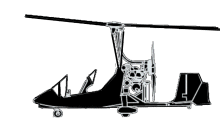
ASN Wikibase Occurrence # 236651
This information is added by users of ASN. Neither ASN nor the Flight Safety Foundation are responsible for the completeness or correctness of this information.
If you feel this information is incomplete or incorrect, you can submit corrected information.
| Date: | Friday 29 May 2020 |
| Time: | 16:15 LT |
| Type: |  Magni M-16C Tandem Trainer |
| Owner/operator: | Private |
| Registration: | N316MG |
| MSN: | 16-06-3474 |
| Year of manufacture: | 2006 |
| Total airframe hrs: | 2315 hours |
| Engine model: | Rotax 914UL |
| Fatalities: | Fatalities: 0 / Occupants: 1 |
| Aircraft damage: | Substantial |
| Category: | Accident |
| Location: | Cape Girardeau, MO -
 United States of America United States of America
|
| Phase: | Take off |
| Nature: | Training |
| Departure airport: | Cape Girardeau Airport, MO (CGI/KCGI) |
| Cape Girardeau Airport, MO (CGI/KCGI) | |
| Investigating agency: | NTSB |
| Confidence Rating: |
The student pilot was conducting touch-and-go takeoffs and landings in the gyroplane when the engine warning light illuminated while on the downwind leg. He dismissed the engine warning light for oil pressure when it extinguished while rolling down the runway and elected to takeoff again. He stated that he noticed a 'weird smell' and that engine did not seem to be making power, so he landed again on the remaining runway; however, noting that the end of the runway was approaching, he then chose to take off again so that the gyroplane did not continue off the runway into the muddy grass. The pilot reported that, after takeoff, he 'had no speed' and 'fell behind the power curve,' and the gyroplane descended into the grass past the end of the runway. The wheels dug into the soft ground and the aircraft rolled onto its side, substantially damaging the rotor system, the airframe, and the tail assembly.
The pilot's flight instructor, who witnessed the accident and was the owner of the gyroplane, stated that the pilot remained on the runway too long before taking off. He stated that the gyroplane became airborne with about 100 to 200 ft of runway remaining and that its nose was 'too high' before it settled back to the ground past the end of the runway. The instructor reported that there were no preaccident mechanical anomalies with the gyroplane.
The engine was examined, and no anomalies were noted that would have precluded normal operation. The accident is consistent with the student pilot's decision to take off with inadequate runway remaining, and his subsequent failure to attain proper airspeed, which resulted in the gyroplane's descent into terrain.
Probable Cause: The student pilot's decision to take off with inadequate runway remaining, and his subsequent failure to attain proper airspeed, which resulted in the gyroplane's descent into terrain.
Accident investigation:
 |
|
Sources:
NTSB CEN20LA203
Location
Revision history:
| Date/time | Contributor | Updates |
|---|---|---|
| 02-Jun-2020 21:44 | Captain Adam | Added |
| 01-Jul-2022 13:29 | ASN Update Bot | Updated [Time, Other fatalities, Nature, Departure airport, Destination airport, Source, Narrative, Category, Accident report] |
Corrections or additions? ... Edit this accident description
The Aviation Safety Network is an exclusive service provided by:


 ©2024 Flight Safety Foundation
©2024 Flight Safety Foundation